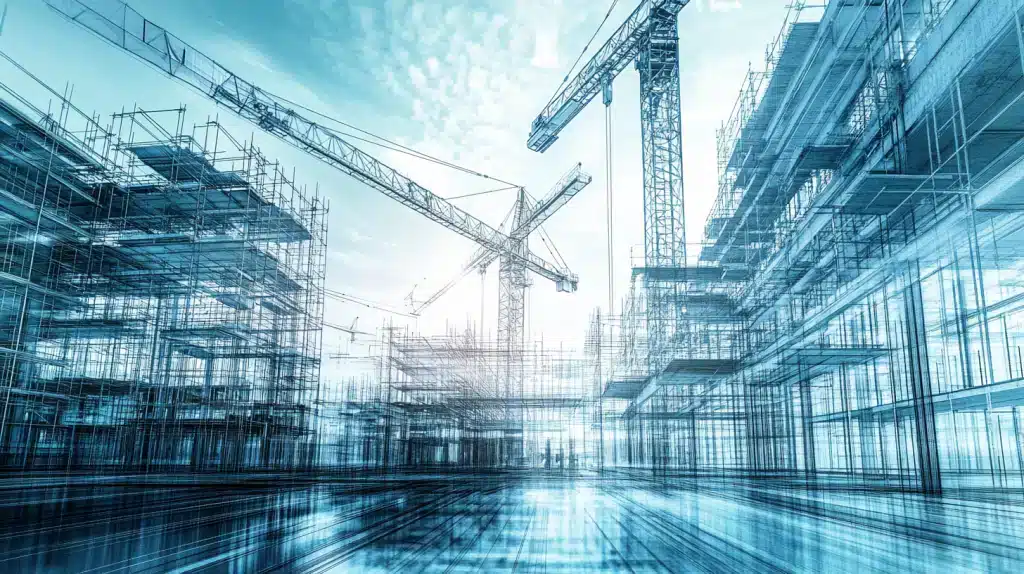The architecture, engineering, and construction industry constantly develops innovative solutions to deliver optimal performance worldwide. Whether it’s the integration of eco-friendly architectural designs into buildings or the use of modern technologies to boost project efficiency, these innovations have brought a revolution in the market.
One such aspect that spurred into life and gained significant limelight for itself is the use of BIM in construction. Also known as Building Information Modeling, this digital process allows streamlined data creation and management throughout the construction and architecture project lifecycle.
Thanks to emerging technological trends like artificial intelligence, IoT device integration, and machine learning, the future of BIM is set to improve further. These will expand the process’s capabilities in terms of automation, real-time decision-making, and data analysis. With improvements in BIM, construction processes can be further streamlined along with the capability of fostering sustainability and encouraging collaboration between various teams. All in all, the innovations in BIM will transform how AEC projects are designed, managed, and controlled.
The Evolution of BIM: From 3D Modelling to Smart Construction
In the 1980s, software tools like Graphisoft ArchiCAD introduced a 3D modeling platform to the AEC industry. It allowed professionals to create 3D virtual models of building structures using different parametric components like materials and dimensions. It was during the 1990s that the BIM software integrated 3D modeling completely and adopted the Integrated Project Delivery concept.
Later on, in the 2010s, the BIM process incorporated advanced technologies like cloud-based platforms and augmented and virtual reality. It paved the way for digital transformation in the AEC industry. With the onset of the 2020s, AI, IoT, and Digital Twins were incorporated into the process, thereby transforming the future of BIM for years to come.
What is the role of BIM in construction?
The BIM technology in construction has brought significant changes in the industry, nurturing sustainability, collaboration, and process automation. It has enhanced project execution and deliveries with 3D building modeling using numerous parameters, like functional structures, materials, and other details. Thanks to this, professionals are now able to achieve accuracy and precision in their decision-making process, ensuring every AEC project can navigate seamlessly around the bottlenecks.
As we are discussing the future of BIM in the construction and architecture industry, knowing its benefits is crucial. Below we have discussed a few ways in which this innovative process has made a significant impact on the conventional construction industry.
- Collaboration: BIM encourages multidisciplinary collaboration between engineers, architects, contractors, and project owners through a centralized, digital work platform. Thanks to this, communication can be streamlined to reduce errors and eliminate data siloes.
- Data integration: The BIM tool integrates multifarious data forms, like geometric, spatial, relational, and geographic information about the architecture and construction project.
- 3D visualization: One of the benefits of using BIM in construction is the ability to depict an accurate and detailed visual of the building. It allows the portrayal of various aspects of a construction project, including architecture, interior and exterior, overall structure, mechanical, electrical, and plumbing systems.
- Sustainability: Construction experts can foster sustainability, reduce waste generation, optimize a building’s energy efficiency, and minimize the negative environmental impacts using the BIM tool.
- Cost savings and efficiency: Early detection of interim issues and clashes using BIM technology in construction paves the way for costly error prevention and mitigation of unexpected delays.
Latest trends in the construction and design industry
The future of BIM is marked by numerous technological advancements that are set to expand the process’s capabilities in the coming years. Below we have illustrated a few trends in the design and construction industry that will help revolutionize the current process.
Digital twins
One of the current trends in construction is the creation of a digital replica of any building structure using real-time or near-time data. It allows the incorporation of the latest technologies, like IoT devices, sensors, and other types of advanced sources. As a result, digital twins are subjected to constant evolution throughout the project’s lifecycle and provide detailed visualization to the professionals.
AI in BIM
Integrating artificial intelligence with BIM in construction has broadened its capabilities by enabling smart project planning, seamless collaboration, and accurate real-time decision-making. Below are some of the benefits of using AI-based BIM tools in the AEC industry.
- AI can automate repetitive tasks, thereby increasing process efficiency and improving the overall deliverables.
- These tools can enable businesses to foster innovation and creativity, thereby offering a richer and more immersive customer experience.
- If fed with accurate information, AI-based BIM tools can improve the decision-making process.
AR/VR
The integration of AR/VR with BIM in construction enables professionals to explore the structures at a full scale. They can assess potential alterations in the project, gain pre-construction experience, and zoom in on minute architectural details.
Cloud-based BIM
With cloud-based BIM tools, teams can collaborate remotely and avoid communication and data siloes. This will help in reducing errors and unexpected delays in the project timeline. Besides, it will also pave the way for increased transparency and data visibility throughout the project lifecycle.
Future predictions: Where is BIM headed?
The future of BIM can be depicted through these expected predictions:
- Full integration with digital twins
- Adoption of machine learning protocols and artificial intelligence
- Incorporation of Green Building Design concept
- Remote work capabilities through cloud-based BIM tools
The future of Building Information Modeling (BIM) is set to revolutionize the construction industry with advancements like AI integration, digital twins, cloud collaboration, and generative design. These emerging technologies enhance efficiency, reduce costs, and improve project accuracy, making BIM an essential tool for modern construction. As the industry continues to evolve, adopting cutting-edge BIM solutions will be crucial for staying competitive and delivering smarter, more sustainable buildings. To explore comprehensive BIM services and innovative solutions, visit Techture.
FAQs
How is AI impacting BIM and construction design?
Combining AI and BIM in construction enables accurate structural visualization and 3D modeling along with process automation, higher cost efficiency, and improved deliverables.
What are the benefits of integrating IoT with BIM?
By integrating IoT with BIM technology in construction, professionals can accurately create digital replicas of structures based on real-time parameters.
How do AR and VR enhance BIM visualization?
The current trends in construction have paved the way for the integration of AR and VR with BIM visualization. It allows professionals to assess building structures and gain in-depth construction experience much before the phase completion.
Is blockchain adoption in BIM practical for construction contracts?
Yes, blockchain adoption can make significant contributions to the future of BIM by increasing transparency and fostering data immutability throughout the project’s lifecycle.
How can BIM contribute to sustainable construction?
BIM allows professionals to assess the energy efficiency of the building structures, reduce waste generation, and focus on Green Building Material adoption.





















